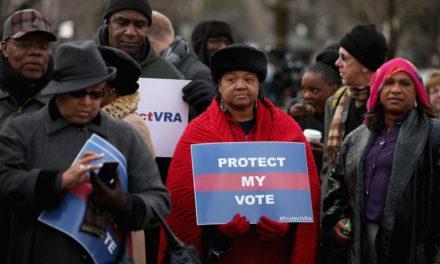
A few weeks ago, I presented a session on anti-racism to a leadership team of research scientists at a large pharmaceutical company. During the discussion they lamented that the pool of Black research scientists is very small. I asked what they were doing about that, and they did not have an answer. I asked if they had ever thought of “growing their own” by perhaps adopting an elementary school in their footprint where the majority of the students are Black and Brown. I suggested that chances are such a school lacks many basics like technology, books, experienced teachers, small class sizes — basics that are standard at many schools that educate white children. I further posited that these young students might not even be able to conceive becoming research scientists because they have not been exposed to such a career. I said what if you filled the resource gaps and provided mentors/tutors that followed the students through high school and then provided scholarships for college. One of the leaders who had been with the company for decades said, “We used to have a program like that in the 90’s; I don’t know what happened to it.”
Another education example: in the 1980’s there was a concerted effort by the corporate world to collaborate with public education to improve outcomes. The Winters Group was retained by an organization called The National Center on Education and the Economy. One of its goals at the time was to illuminate disparities in public education and encourage corporations to lend their support of money and talent. The Winters Group conducted research in the Rochester, NY, city schools, one of the pilot districts for the effort. This was to be an innovative approach that included increasing teacher salaries and the formation of corporate and community partnerships. Companies like Eastman Kodak and Xerox stepped up to the plate and loaned executives to work alongside school leadership to quell high suspension and dropout rates among students of color and increase academic performance. I am not sure what happened along the way, but the bottom line is that it did not result in sustained improvement, and these core initiatives of The National Center on Education and the Economy no longer exist.
In the 70’s, the Big Three automakers aggressively recruited Black franchisees for their minority dealer training programs, providing financing to help them get started. While these efforts to level the playing field and increase Black business ownership have continued, they are not as robust as when they first started. For example, since 1998 GM has only increased the number of minority–owned dealerships from 320 to 350.
One of the key issues with attempts at systemic change is that initiatives that have a real chance at correcting inequities are often not sustained for a variety of reasons, such as:
- New leadership takes over and they are not as committed
- The work is not embedded into the organization’s core mission
- Competing priorities and equity efforts fall to the bottom
- Short term, program–of–the–month mentality
- Poor program administration
Many companies made renewed commitments to address racism at the height of the Black Lives Matter Movement sparked by George Floyd’s death in 2020. They pledged millions of philanthropic dollars to civil rights and social justice organizations; set aggressive representation goals; pledged money to help small Black owned businesses; declared Juneteenth a holiday and strengthened their zero tolerance policies. Too many hurriedly issued these commitments without considering a longer term, more systemic approach. For many of the Black employees that we spoke with during our listening and healing sessions, there was skepticism about the sincerity and ability of their companies to make good on these promises.
There are some promising efforts by companies like SurveyMonkey who recently announced a partnership with the Justice Collective, a 100% woman-of–color–owned non-profit social impact consulting firm that centers racial and social equity. The effort tracks the representation of historically marginalized racial and ethnic groups working inside corporate vendor organizations, including law firms, technology services suppliers, food suppliers, landlords, marketing agencies, investment banks and auditors. Top tech companies 23andMe, Age of Learning (creator of ABCmouse), Box, Chime, Eventbrite, Genesys, Headspace, Intuit, Leaf Group, PagerDuty, Slack, Tile, Tinder, Upwork and Zoom are some of the participants joining the initiative.
In 2007, The Gap created the This Way Ahead Program to help youth ages 16-24 facing barriers to employment get their first job. The program also builds employees’ leadership and management skills. They have integrated the program into their recruitment strategy to help Gap, Inc. stores build a valuable talent pipeline of future employees. With a goal that 5% of new entry-level store hires will be graduates of This Way Ahead by 2025, 10,000 youth participated in This Way Ahead in 2020. Through a new national partnership with Boys & Girls Clubs of America, This Way Ahead was offered in 22 U.S. cities in 2018 and will be in 60 cities by the end of 2020. Local Clubs will connect youth with hiring opportunities at Banana Republic, Gap and Old Navy stores and will operate year-round. This is an example of a long-term approach to build an employment pipeline.
Beyond the boardroom requires innovative partnerships and collaborations with long-term—even perpetual—commitments in order to effect systemic change. Share on XBeyond the boardroom requires innovative partnerships and collaborations with long-term — even perpetual — commitments in order to effect systemic change. Organizations must forge partnerships that address the interconnectedness of racist systems. Corporate folks must come out of the board rooms to partner with schools and the broader community to address issues like environmental racism and the criminal justice system. What is long-term? It is relative, of course. However, it might take 10 years or more of intentional efforts to effect real and lasting change. As organizations make well-meaning commitments to dismantle racist systems with a “sense of urgency,” they must be realistic about the time and effort that it will take. Of course, small wins are possible early and throughout the process, but if the efforts are not set up to be sustainable, then they will either plateau or be discontinued. There is no end game for equity.
When working to dismantle racist systems, small wins are possible early, but if the efforts are not set up to be sustainable, then they will either plateau or be discontinued. Share on X




![I Am [From] Woman: An Ode From a Man](https://theinclusionsolution.me/wp-content/uploads/2017/03/i-am-from-women-620x330.png)













